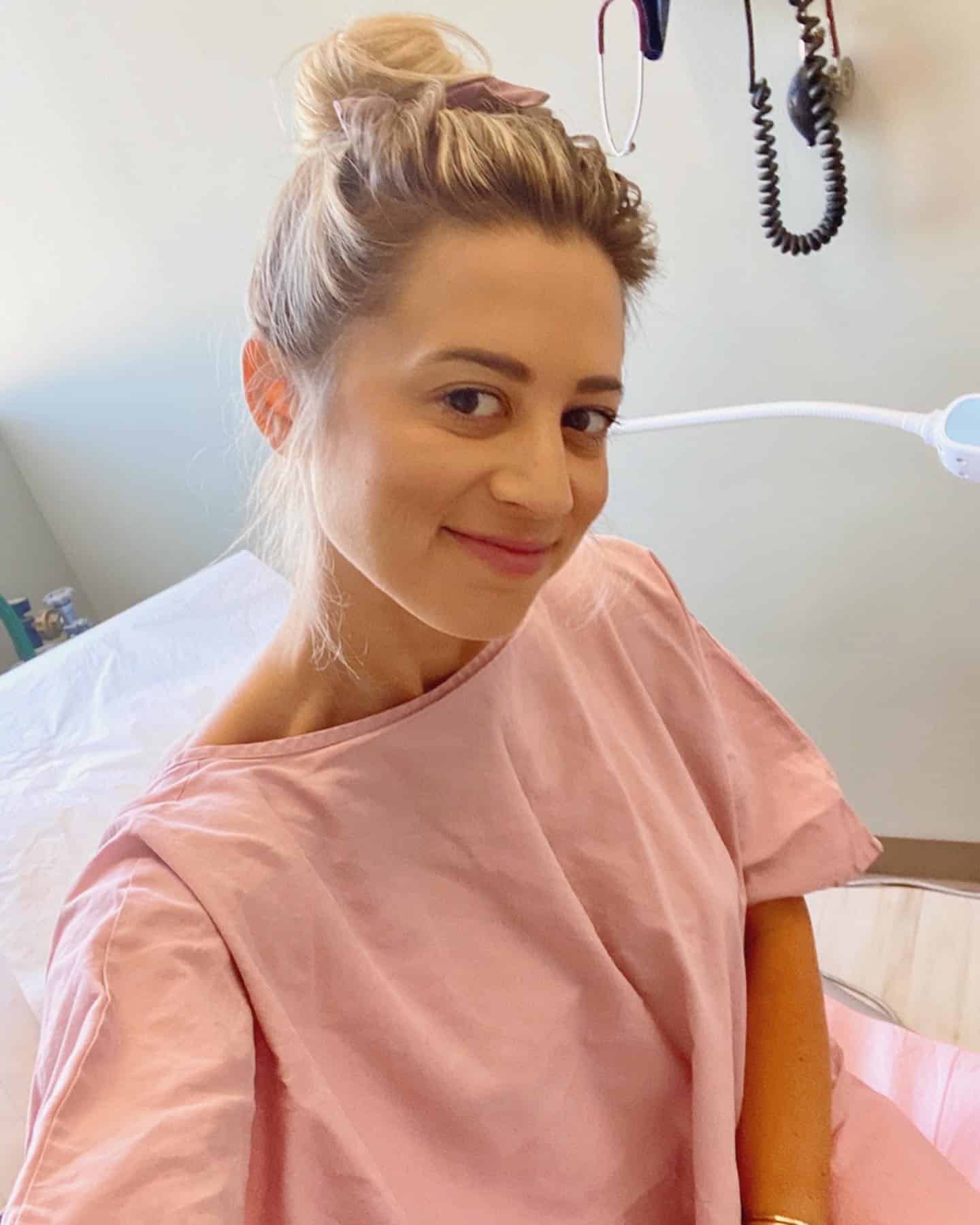*immediately starts googling LEEP procedure*
After continuing my gyno’s email, I was reverted back to how I felt before my preventative double mastectomy. Scared, nervous, sad, frustrated. All valid feelings to have when you don’t know a single other person who has been through either surgery! Ahh the unknown. Hello darkness my old friend. These feelings were more or less short-lived. In both instances, I immediately threw myself into prevention mode. Within 40 days of hearing about my BRCA+ results, I was on an O.R. table. Within two weeks of hearing about my HPV infection, I was back in stirrups.

What’s a LEEP Procedure?
When I received that lovely email from my gyno, I did even more digging. I am insanely curious and have to know everything about everything…which can be good and also very bad. Turns out, the internet can be a scary place. Please allow my little corner of the internet to be vastly different.
It all starts with an abnormal pap smear. I’ve had abnormal paps for the past three years. My doctor has called me back all three years for a colposcopy where she took a closer look at my cervix (the narrow end of the uterus at the top of the vagina, yay anatomy!) as well as a tissue sample for lab testing. This is usually accompanied by minor cramping and then boom. All is said and done! It’s not what I’d choose to do in my free-time, but prevention is key. This year, I got got the triple threat of a pap smear, a colposcopy and a LEEP.
LEEP stands for Loop Electrosurgical Excision Procedure and named after the tool used which has a wire loop on the end. An electric current heats the wire loop so your doctor can remove (excise) some cells on your cervix. I know – that doesn’t exactly have a friendly tone to it, but it all sounds worse than it is. Because my colposcopy lab results showed pre-cancerous cells caused by HPV, I needed a LEEP in order to shed those cells for healthy tissue growth. Otherwise, cervical cancer could develop, and ain’t nobody got time for that.
What to expect during a LEEP
I got undressed from the waist down. I covered up with a pink drape. I exchanged pleasantries with my gyno and her team. A nurse placed a grounding pad on my thigh because we were working with electrical currents. Then I braced for impact.
The insertion of the speculum was probably the most uncomfortable part for me just because it was larger than normal due to its special insulation to protect against the electrosurgical current. Next up came the local anesthetic to numb the area of the cervix. I’d heard this was painful and produced a bee-like sting, but I hardly felt any pressure when the needle went in. Phew. From that moment on, it was smooth sailing due to complete numbness. The loop was then inserted to take off any pre-cancerous cells, a special paste was applied to stop the bleeding, two tampons were inserted to act as band-aids, and out came the ugly speculum! All of that probably lasted 6-7 minutes.
The Aftermath
I felt dizzy afterwards so I stayed on the exam table for a bit. This is typical of such a procedure because manipulating the cervix causes a reaction to make your blood pressure go down (vasovagal syncope). I’ll have a check-up in two weeks and another pap smear in three months.
Helpful Tips
- Take ibuprofen before and after.
- A heating pad helps with cramping.
- Bring a positive attitude – ridding your body of bad cells before cancer hits is a GOOD THING.
- Talk about it. Having a support system is huge, and I’m so glad I put it out via Instagram b/c so many women shared their stories which made me feel like I wasn’t alone.
- A few minutes after the procedure, I felt fine to walk. I could’ve driven after a few more minutes of rest but was happy Alex was there to drive!
- Any man or woman who has ever had any sexual contact with another person can get HPV. The virus is spread by skin-to-skin contact.
- I got the HPV vaccine in college, but that only protected me from certain types of the virus.
- Side effects of a LEEP include bleeding, discharge and mild cramping. Cervical insufficiency is very rare, and there is a small increase in the risk of premature births and having a low birthweight baby.
- It’s recommended that women who are HPV+ get screened once a year and women who are HPV- get screened every 3 years. I’m a firm believer in the EVERY YEAR MODEL.
- No running for a few days, no baths for two weeks, no sex for 6 weeks.










































